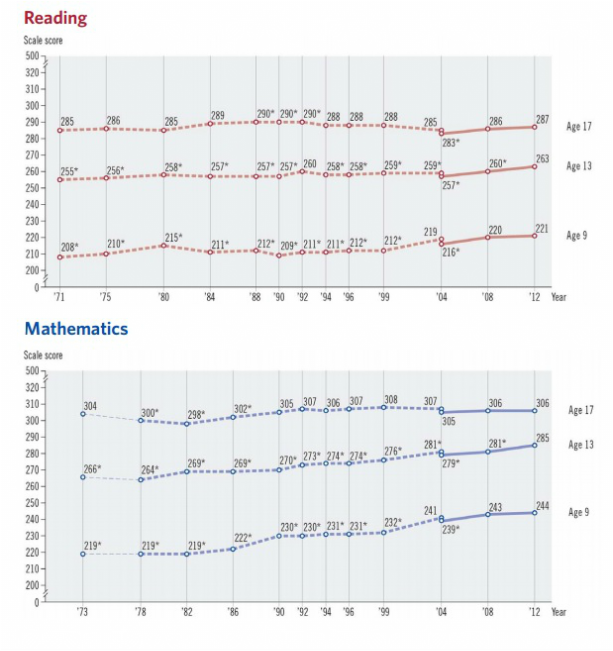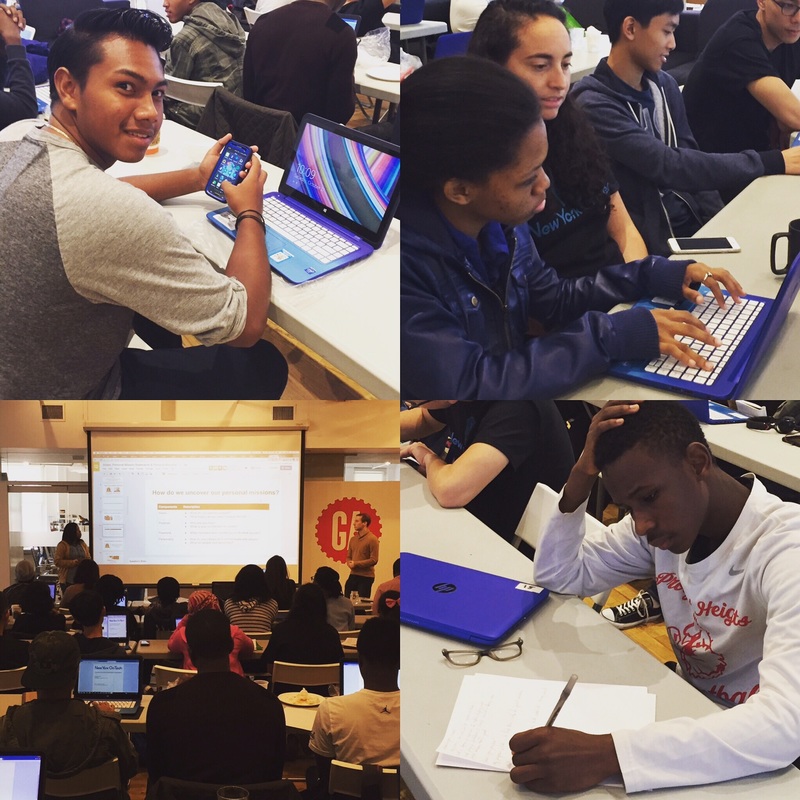
What I’m more interested in are the 2015 results for students in 12th grade, which are slated to be released in 2016. Until this year, 4th and 8th graders had seen small but steady increases in their NAEP scores since 1990. Seniors’ scores, however, have been consistently stagnant. The last time 12th graders took the NAEP test, in 2013, their scores in math and reading remained unchanged from the 2009 assessment.
This trend for high school students goes back much further and is best illustrated by NAEP’s Long-Term Trend Assessment, first administered in the early 1970s. This is different from the main NAEP test discussed above, and the two are not directly comparable. They are conducted in different years, their content and scoring differs somewhat, and the long-term assessment tests students at ages 9, 13, and 17, rather than by grade level. But, according to the National Center for Education Statistics, it is “the most reliable instrument of change over time.”
In the long-term assessment results, both 9- and 13-year-olds have shown steady improvement since the early 1970s. Seventeen-year-olds, on the other hand, have had consistently flat scores, and in 2012 – the most recent testing year – their performance had no statistically significant difference from the first time the assessment was administered. Below is a screenshot from the 2012 NAEP report, “Trends in Academic Proress,” which highlights the difference:
Because NAEP takes a representative sample, it’s also vulnerable to something called Simpson’s Paradox, a mathematical paradox in which the composition of a group can create a misleading overall trend. As the United States population has become more diverse, a representative sample picks up more and more minority students, who tend to score lower overall than white students. That tends to make our overall scores appear flat, even as all of the groups that make up the overall score improve markedly.
It’s possible that rapid demographic changes could level off at some point, causing overall scores to begin rising steadily. However, I could’ve written that exact same sentence in the 80s, the 90s, or the early 2000s. Regardless of the shifting racial trends in our student body, the fact that our nearly-college-aged students’ performance as a whole has been stagnant for 40 years is a scary thought.
Phillip Burgoyne-Allen is a policy analyst at Bellwether Education Partners. Reach him via email or Twitter.




 RSS Feed
RSS Feed